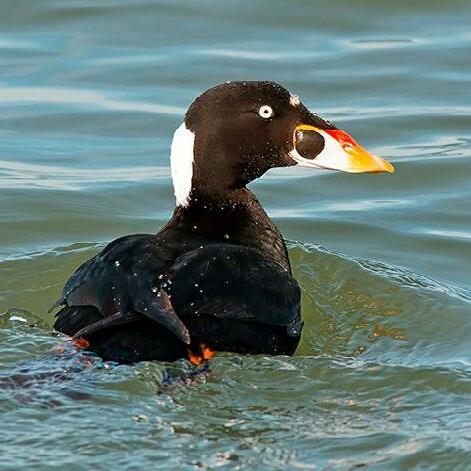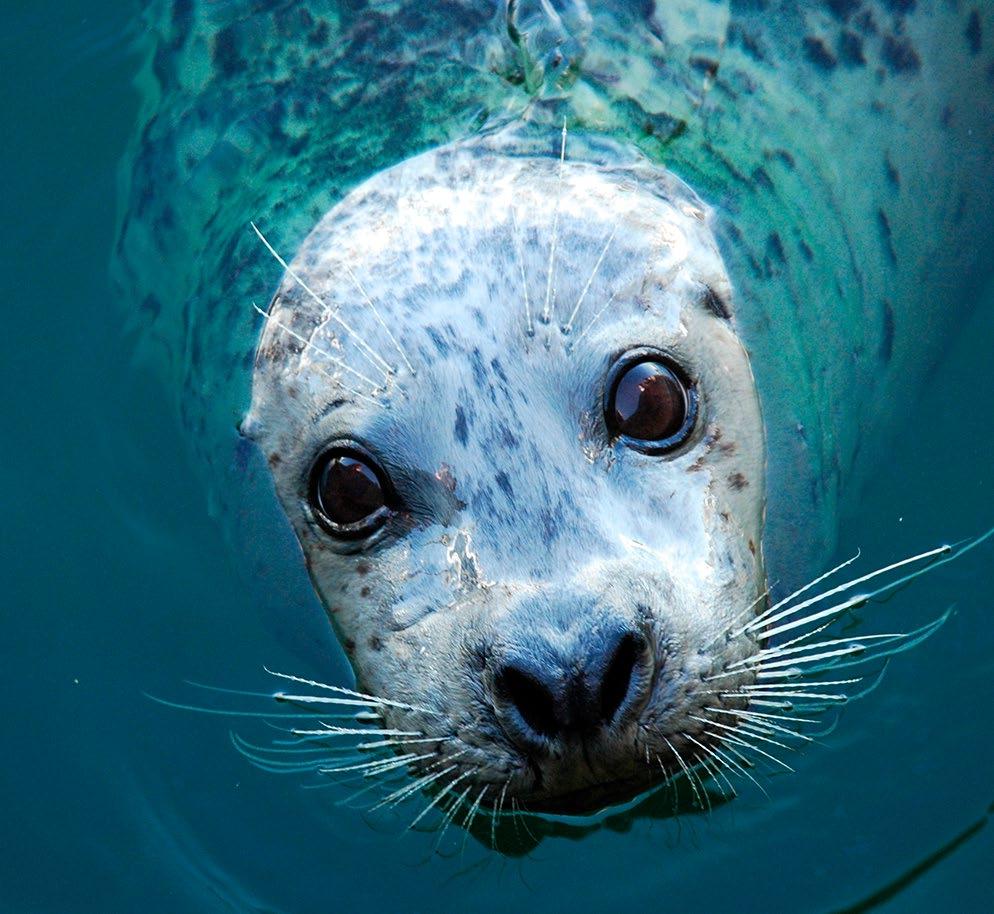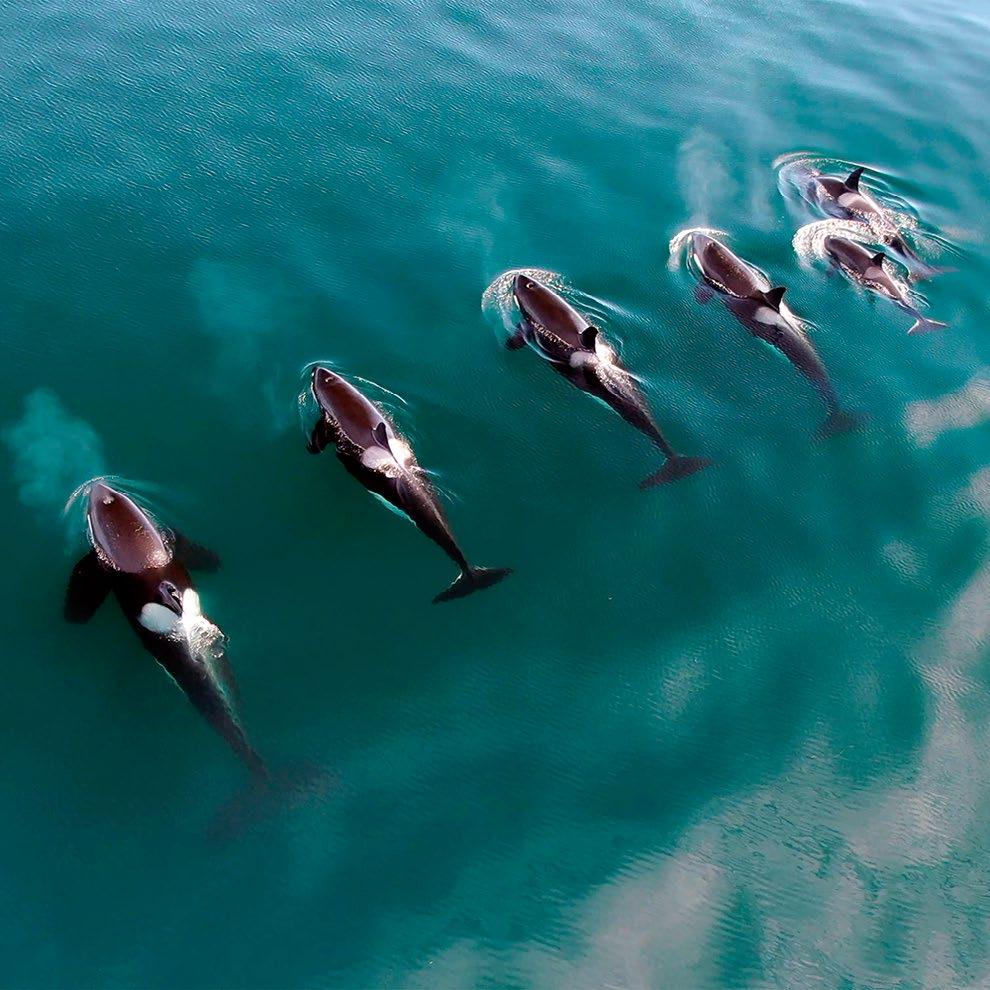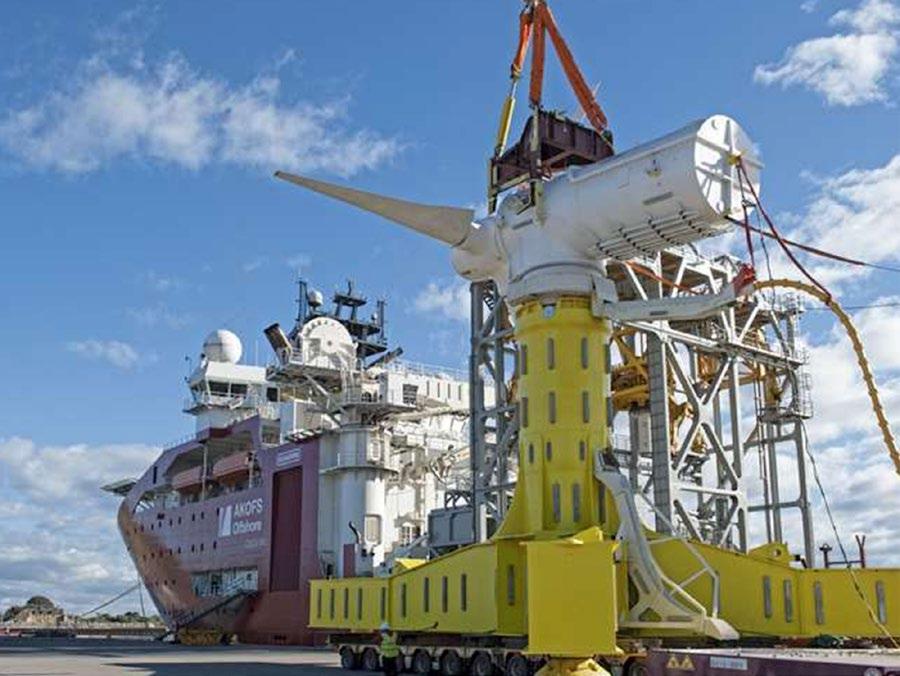
3 minute read
What is Marine Renewable Energy?
Collision
Description
The presence of MRE devices, in particular the rotating blades of tidal and river turbines, is thought to pose a risk to marine animals. Animals could come into close contact with turbine blades in the course of their natural movements, because they are attracted to the device for purposes of feeding, shelter, or out of curiosity, or because they are not strong enough to avoid currents that might sweep them into the blades.

The concern is that a collision with moving device parts (e.g., turbine blades) or a moving device (e.g., tidal kite) could cause permanent injury or death. For animal populations that are already under stress for other reasons, such as historical overfishing, climate change, or other human activities, the loss of a few individuals due to collision might affect the survival of the population. The greatest concerns are for marine mammals, commercially and recreationally important fish species, sea turtles, and endangered seabirds.

Level of knowledge/uncertainty
The risk of marine animals colliding with a tidal, river, or current device is considered to be relatively high because it is uncertain whether collisions will occur, and the consequences of a collision could be severe. There have been no observations of marine mammals, seabirds, or sea turtles colliding with turbine blades and no evidence that fish collisions with operational turbines lead to injury or mortality. Furthermore, the sensory capabilities of these animals suggest that collisions with turbine blades will be rare. However, much remains unknown. Observing animals in the vicinity of tidal turbines is challenging, and we have few tools designed for this purpose. These waters are fast-moving and often murky, and the probability of observing a collision event under these conditions is low.

Guidance and recommendations
To better understand collision risk, we need additional information about animal presence and avoidance behavior around turbines. We also need improved methods for monitoring around devices in high-energy conditions to better observe close interactions. These data can be used to develop, improve, and validate the accuracy of numerical models of collision risk to understand effects on individuals and populations of interest. Decreasing the uncertainty about collision risk will be particularly needed as the industry moves to arrays of devices. This is a topic of current research in the MRE community; subject matter experts and industry developers are working together to share knowledge and information as they become available to broadly advance understanding of this potential risk.

Collision Risk
The dial summarizes the broadly understood level of risk that collisions will occur between marine animals and turbines for small numbers of devices.
MRE case study: Collision risk monitoring at MeyGen
The MeyGen project team developed a monitoring plan North Sea to understand colIreland lision risk at their North Atlantic Sea tidal energy project France in the Pentland Firth, Scotland. The plan included two primary objectives: estimate avoidance and collision rates for harbor seals to verify and improve the accuracy of collision/encounter rate models, and provide sufficient monitoring data for impact assessment to allow each subsequent stage of the development to proceed. The monitoring plan included detecting avoidance behaviors and potential collisions of marine species, focusing on harbor seals using video cameras, passive and active acoustic monitoring, and tagging. Although harbor seals were the primary concern, the technologies deployed were capable of monitoring other marine animals. The results showed no collisions or other detectable impacts caused by the presence of the tidal turbines. The study also found that harbor seals used the area less when the turbines were operational, suggesting that they were aware of and avoiding the turbine, or that they do not choose to swim when the tidal currents are strongest. A later study showed that harbor porpoises avoided the operational turbine.
Norway United Kingdom







